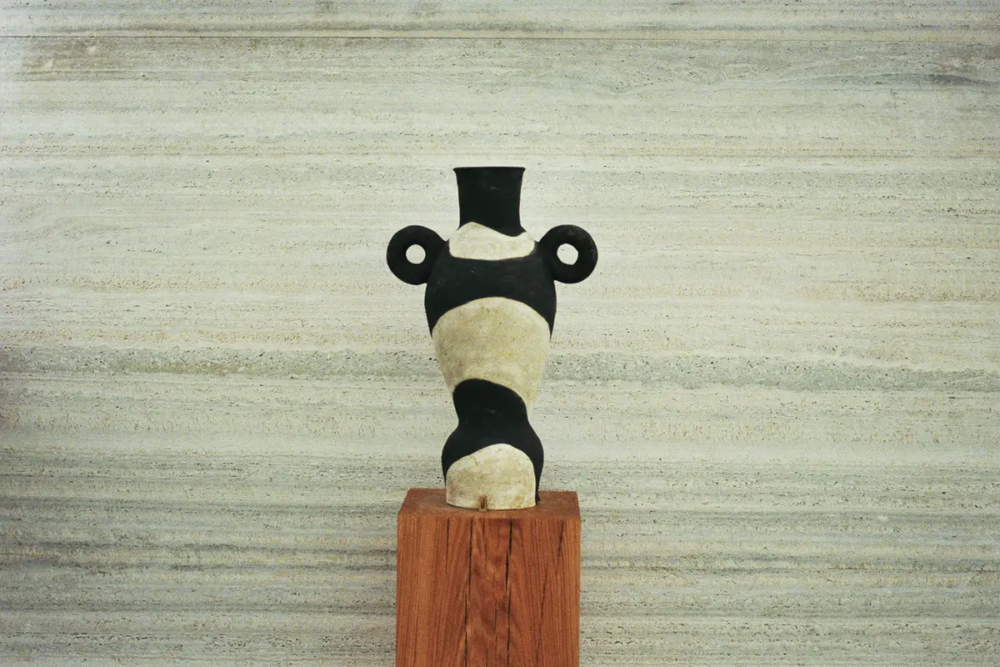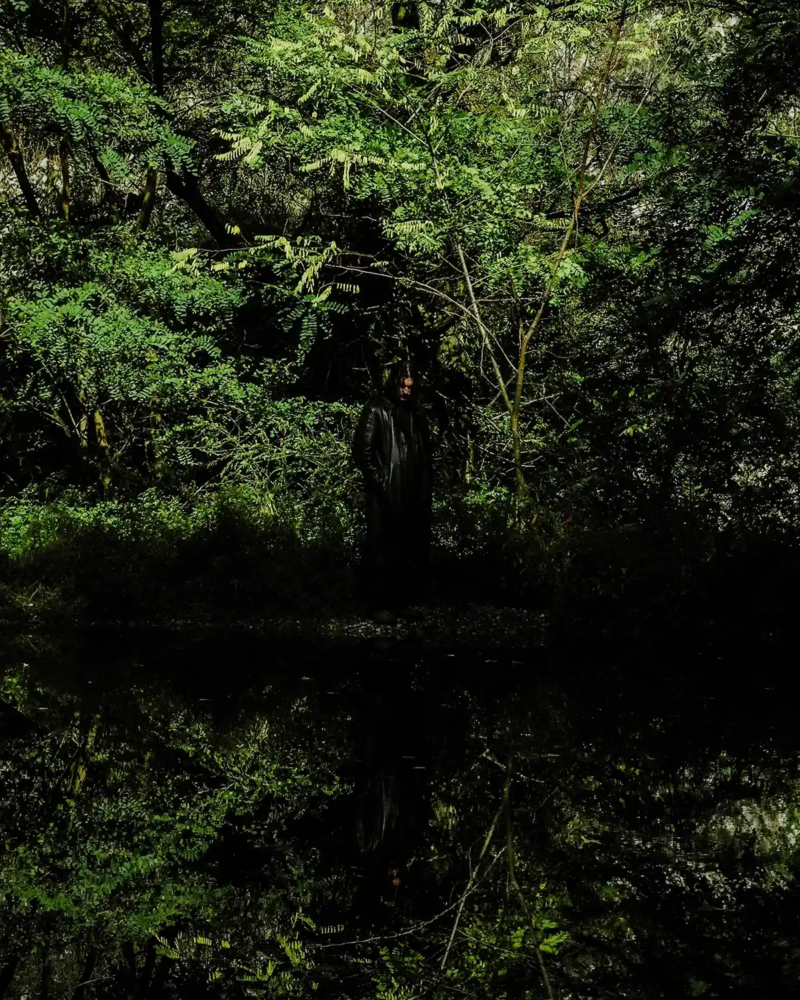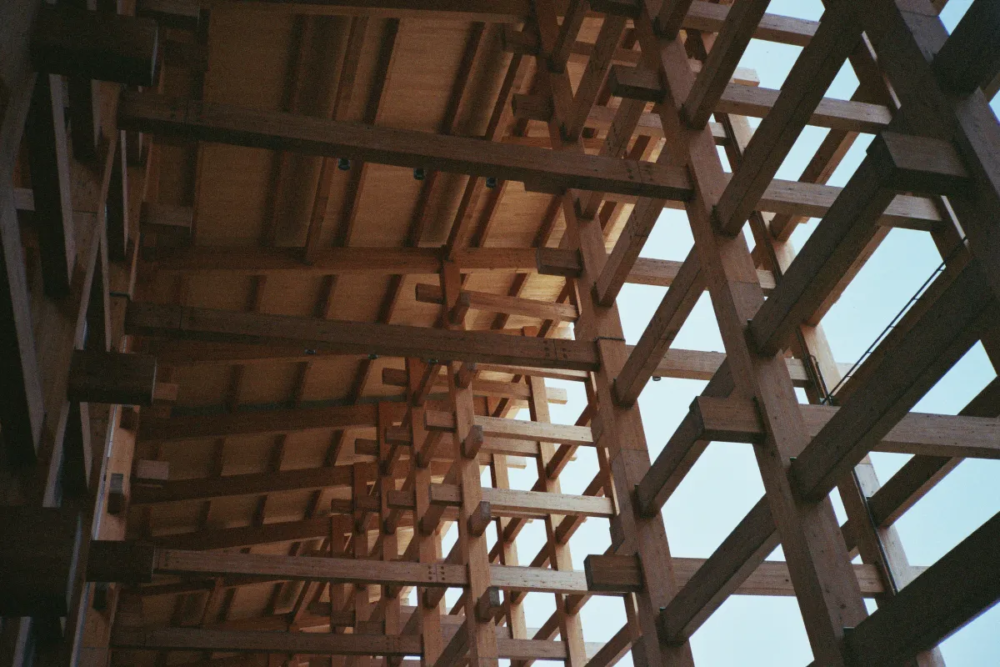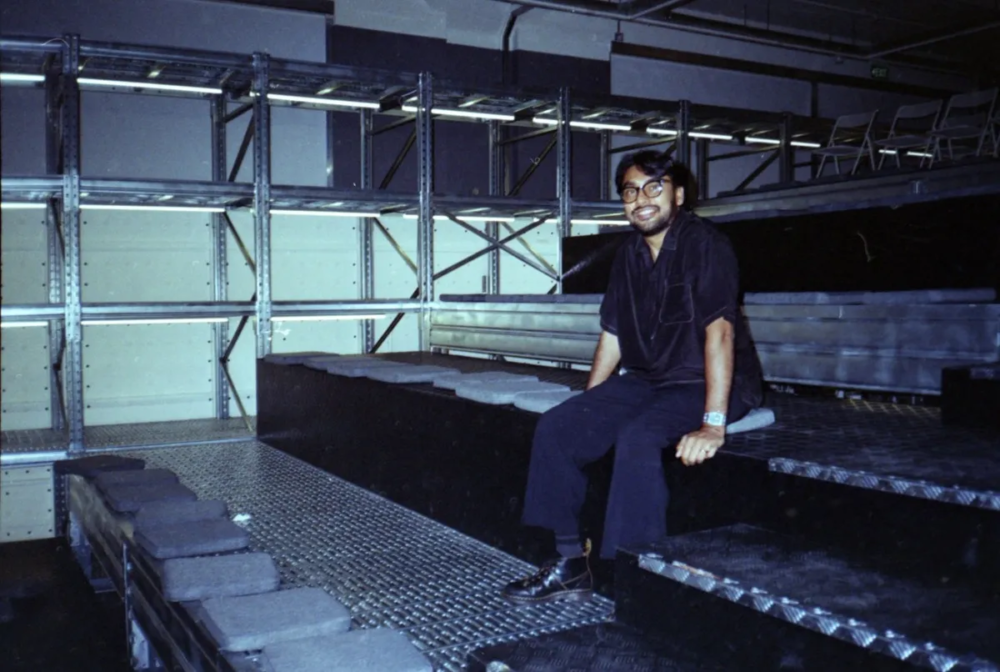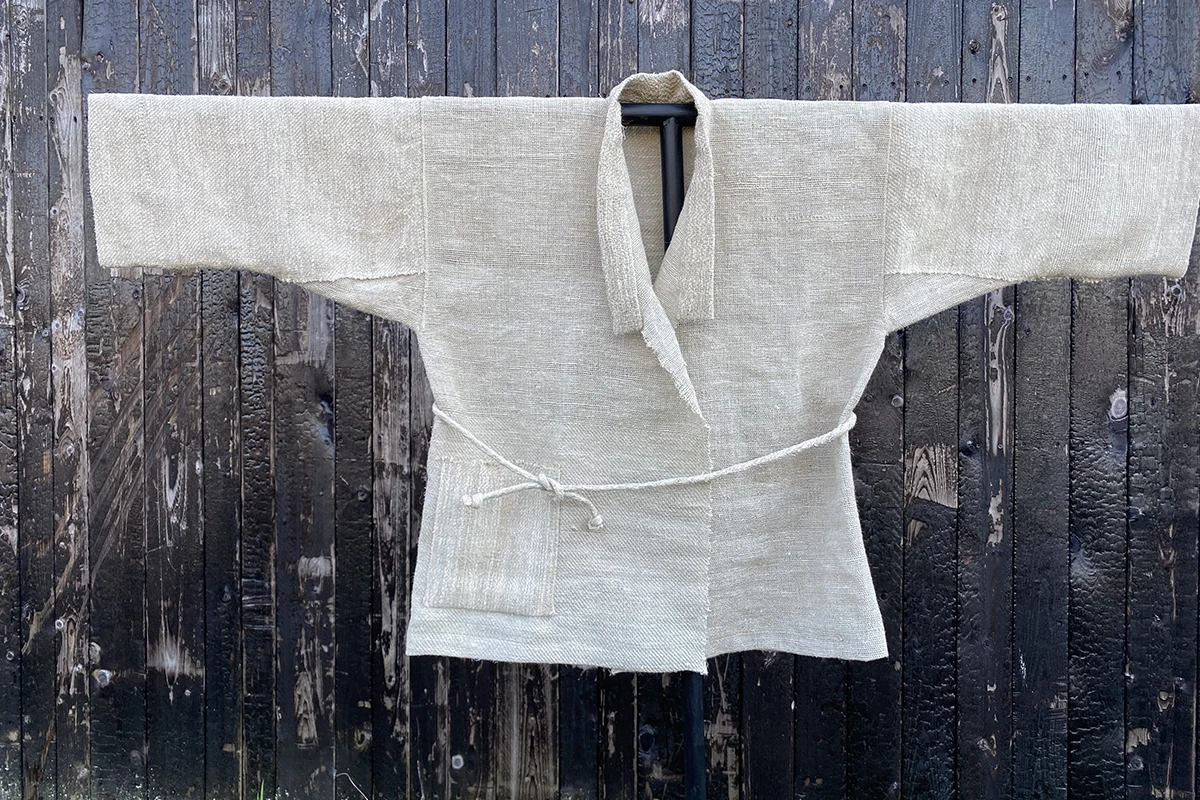
Cattail: the wetland plant can restore Dutch peatlands and provide fiber for textiles
As the Dutch countryside sinks into clay-rich peat, Studio RietGoed turns resilient cattail into a dual solution—restoring waterlogged soils while developing plant-based textiles for tomorrow’s fashion
From Dutch peatland crisis to sustainable design: how Iris Veentjer began exploring cattail textiles
If it weren’t for the dire state of the Dutch peatlands, designer Iris Veentjer might never have considered exploring the potential of cattail as a source for fabric. In 2021, she submitted the broad concept to a tender from the Dutch Ministry of Agriculture, which was seeking ideas for regenerative projects. “I had heard of other researchers trying to develop textile fibers from cattails, but they couldn’t make it work,” Veentjer says. “I wanted to try it myself.”
Originally trained in interior architecture, Veentjer knew little about cattail cultivation or fashion when she began her project, RietGoed. “My earlier design projects, like coffee cups made from local clay, also came from a place of curiosity and naivety. You can get quite far by simply observing: how does my material behave?”
Cattail as a regenerative textile innovation for sustainable fashion and peatland recovery
Veentjer began by hand-scraping the fibers – one of the most labor-intensive of the fifty methods documented in academic literature. Later, she developed a small machine inspired by techniques used to process banana fibers. A cattail leaf passes between two rollers, with water and air pressure applied in between; everything that isn’t fiber is washed away. What remains is a water-rich pulp. Veentjer air-dries the lustrous fibers outdoors, then cards, combs, and hand-spins them. She taught herself to weave, with help from Jolanda Roodenburg, one of the few remaining experts in the Netherlands.
Cattail plants and their fibers differ significantly from crops that grow in firm soil. Veentjer compares her latest samples to jute sacks. She wove a continuous piece 0.45 meters wide and over 3.5 meters long. Then came a fanny pack and a western-style kimono. The prototypes are too rough for the market, she admits. “It’s still very coarse because of all the handwork, but processed mechanically, it could be soft and fluffy.”
Cattail fibers could resemble cotton in texture but offer better moisture absorption and natural fire resistance, thanks to their aquatic origins. Since the fibers are longer than those of flax, the potential quality may be even higher.
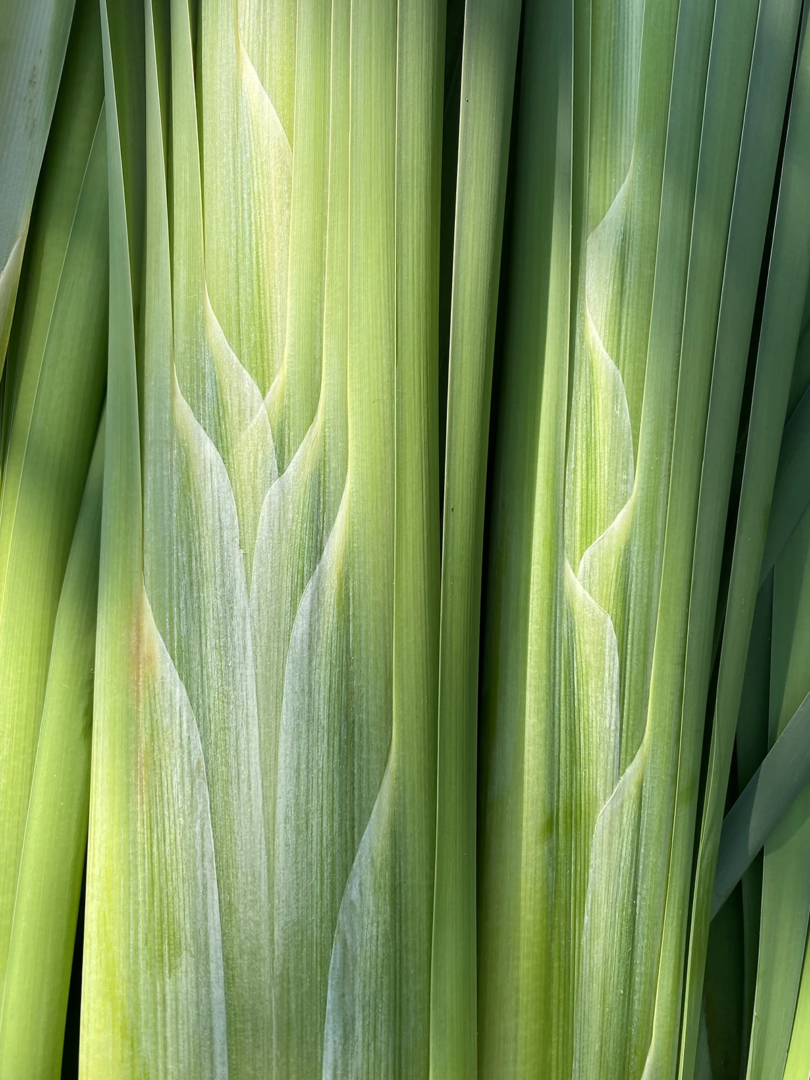
Harvesting cattail with biodiversity in mind: protecting insects while developing fibers
Four years into her research, Veentjer now understands why earlier attempts by Wageningen University, a renowned research hub for textile innovation, failed: they treated cattail like flax, harvesting it at the end of its flowering period, when the plant is already dying. By that point, nutrients have retreated into the root system, and the stems become porous and weak. Veentjer harvests just after the pollen is released. “Many insects rely on it,” she says. “Biodiversity should be high on the list of considerations when working with plant-based fibers.”
Cattail can be harvested as early as June and may regrow for a second harvest later in the season, but Veentjer chooses to harvest only once. “A second cut would deplete the landscape,” she says. “We need to show respect for the land and look beyond what we can take from it.”
From tea towels to dredging bags: new applications for biodegradable cattail textiles
Veentjer dreams of creating tea towels from cattail. “Using water plants to dry things is such a powerful metaphor.” She’s also researching dredging bags, used in large numbers to keep Dutch ditches clear. “Dredging occurs at least every five years, and new regulations are banning the dumping of traditional plastic bags that release microplastics into the soil. How great would it be to make biodegradable ones from the same plants growing alongside the ditches?”
Cattail fabric breaks down in soil within three months. Cotton decomposes slightly faster, while linen takes longer. Byproducts of the process include pulp, which can be used to make paper. From the cattail cigars, Veentjer created a prototype of plant-based fur, attaching it to a cotton base. The rolled-out surface of one cigar can reach up to 10 cm wide by 20–25 cm long. She stitched them into a coat for Dutch Design Week. Eventually, it might be functional enough for everyday wear. “The material naturally resists moisture. I spilled a glass of cola on one of the rugs and it just rolled off.”
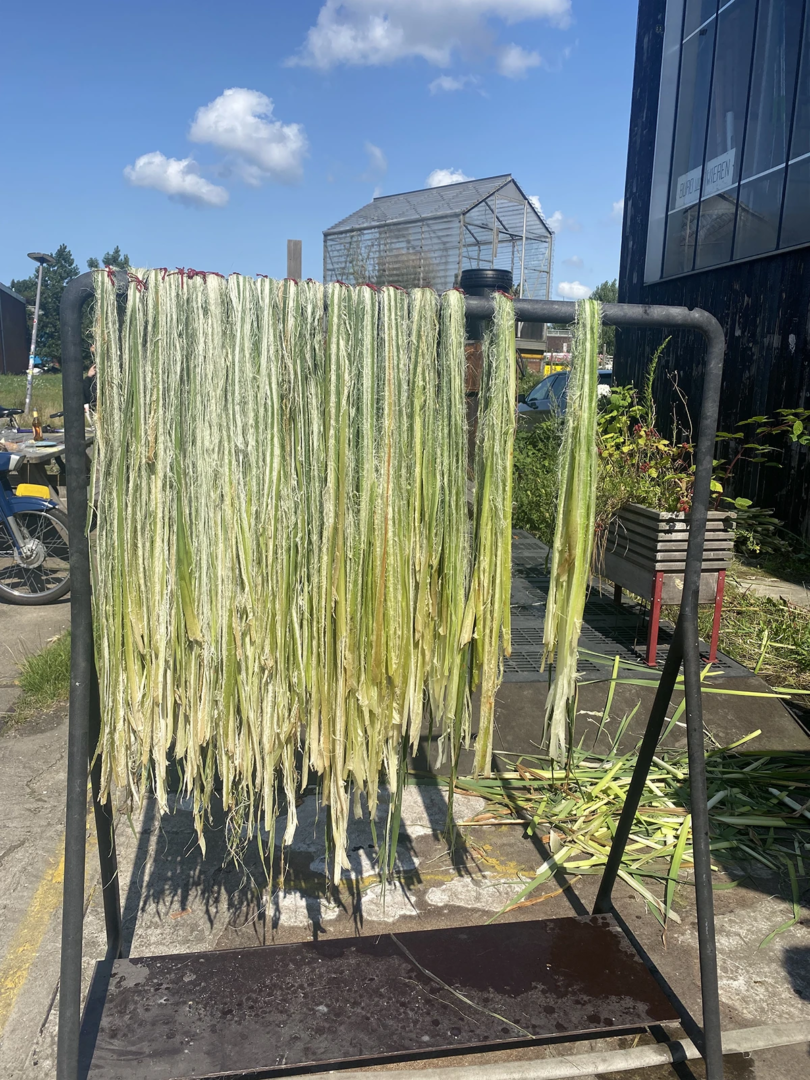
How cattail cultivation can combat soil subsidence and restore Dutch peatlands
The goal isn’t to inspire fashion companies to produce more (eco-friendly) clothing. Veentjer wants to address one of the Netherlands’ most pressing geographic challenges: soil subsidence. Cattail cultivation could stabilize Dutch peat soil and even build it up, aiding carbon sequestration.
A thousand years ago, nearly half of the Netherlands consisted of impassable peat bogs. Peat forms when dead plant material accumulates in wetlands; without oxygen, organic matter doesn’t decompose. When the Dutch began draining the land for cows, crops, or housing, the dried-out soil shrank, and the peat was exposed to oxygen. Once that happens, peat begins to oxidize and literally disappears into the air as CO₂. The land sinks further, approaching the natural groundwater level, which demands more pumping. It’s a constant cycle of loss. In short: as long as peat stays wet, it stores more CO₂ than it releases.
“Conserving peatlands is key to storing carbon and preserving biodiversity – we need to keep them wet,” Veentjer says. “Cattail can grow in that environment. And because it naturally dies back, the leaves fall to the soil and form a new layer of peat. So over the years, instead of losing ground, you can actually build it back up again.”
Many Dutch people are unaware of the problem until their homes start to sink. In Rotterdam, where Veentjer’s workspace is located, one neighborhood has sunk by nearly a meter. In Gouda, a historic city known for philosopher Desiderius Erasmus and its cheese, subsidence is even more severe.
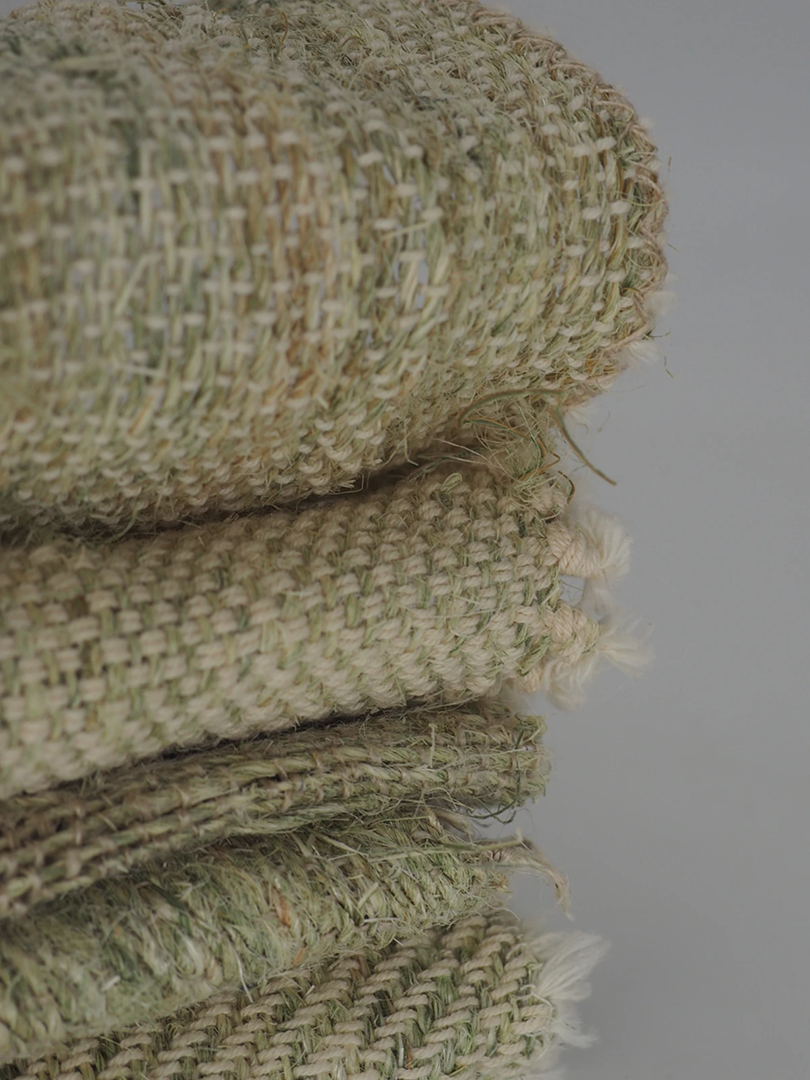
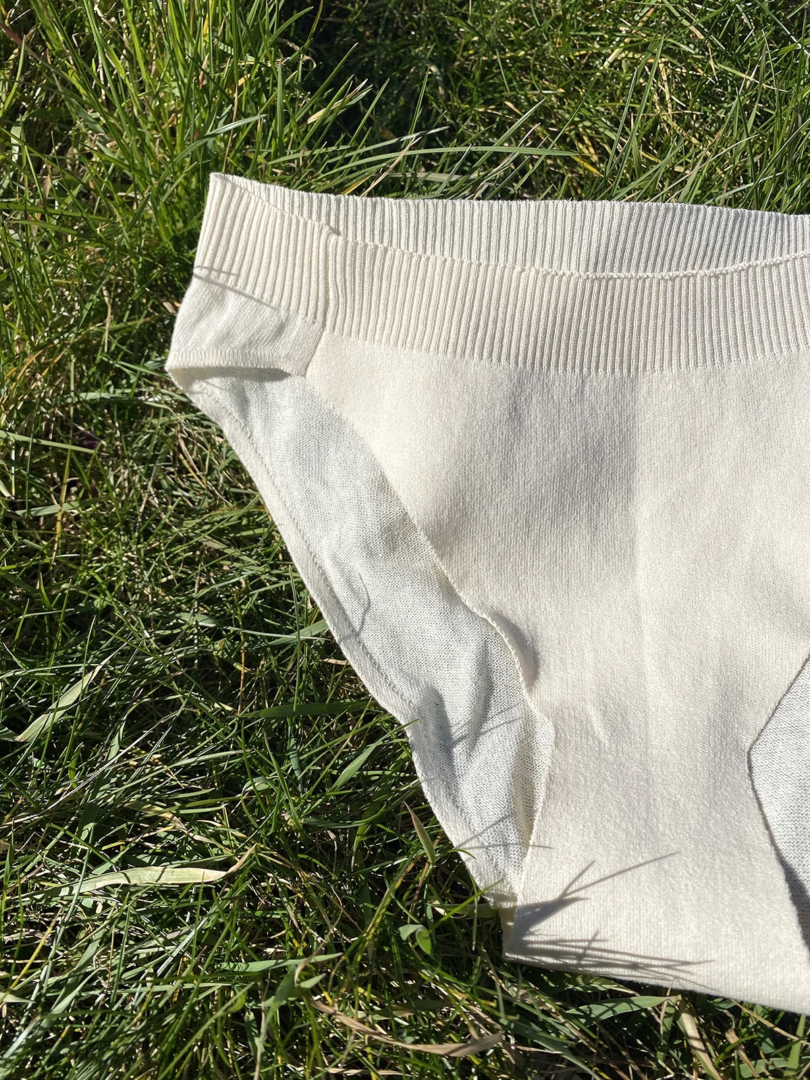
The role of space, soil and weather in shaping cattail growth and fiber quality
Through experimentation, Veentjer is learning how cattail can thrive. “If we cut them with enough buffer – about 10 cm above the water level – the plants survive well,” she says. They also need a natural environment and plenty of space. She points to large-scale industrial projects, like those in Zegveld, where cattail is cultivated to produce insulation materials. “If you plant sixty cattails per square meter in a non-natural setting, you end up with stiff, coarse fibers,” she says. “You gain volume, but it comes at the cost of the environmental benefits cattail can offer. And with fiber that low in quality, farmers won’t get a fair price.”
In The Hague, Veentjer works in a 300m² food swamp that offers a more natural environment. The cattail is intercropped with other species. “Plants in that space grew up to 18 centimeters thick, compared to only 4 cm in Zegveld. They carried more leaves and weighed twice as much: 40 grams of fiber per plant versus 20.”
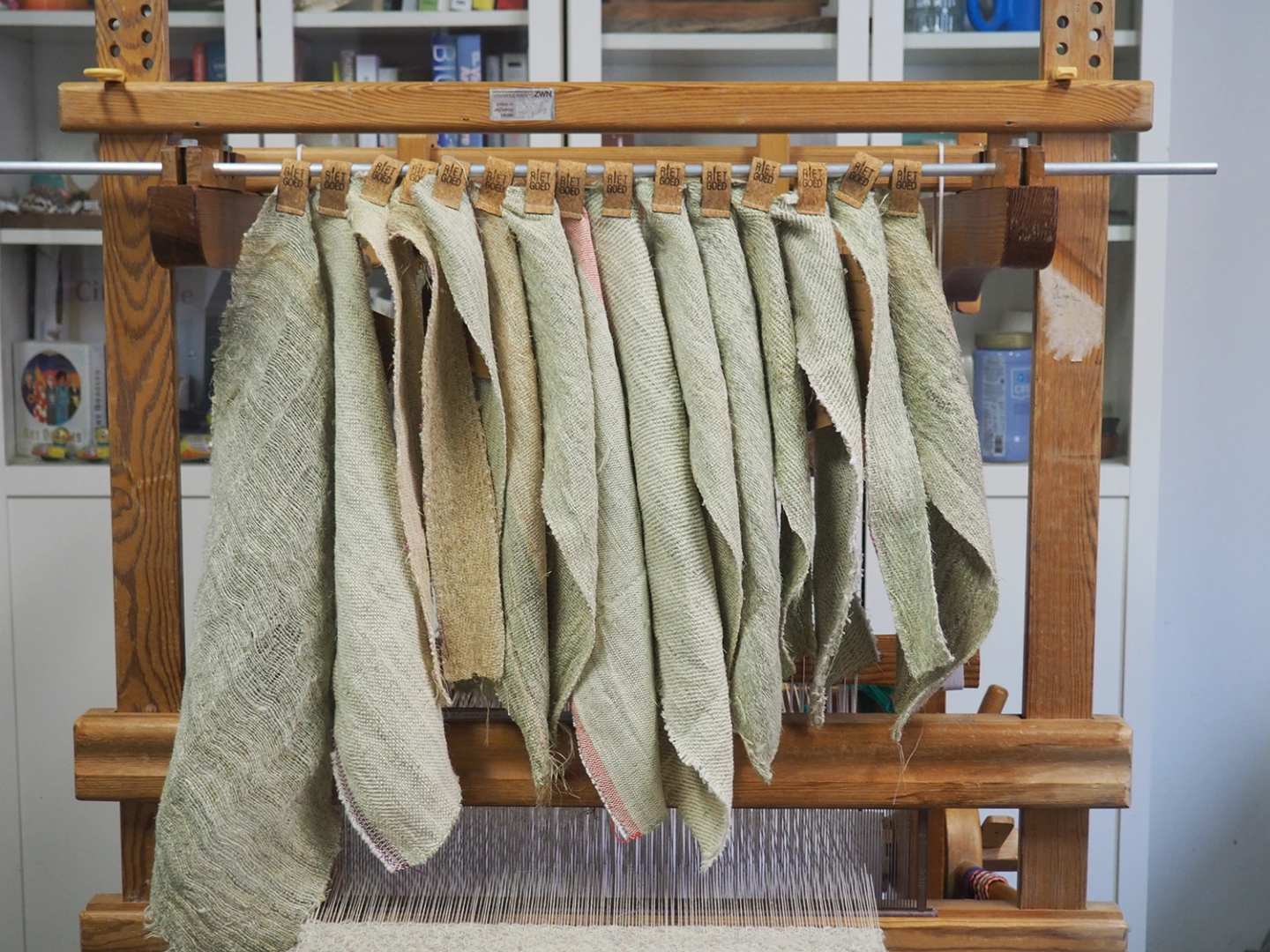
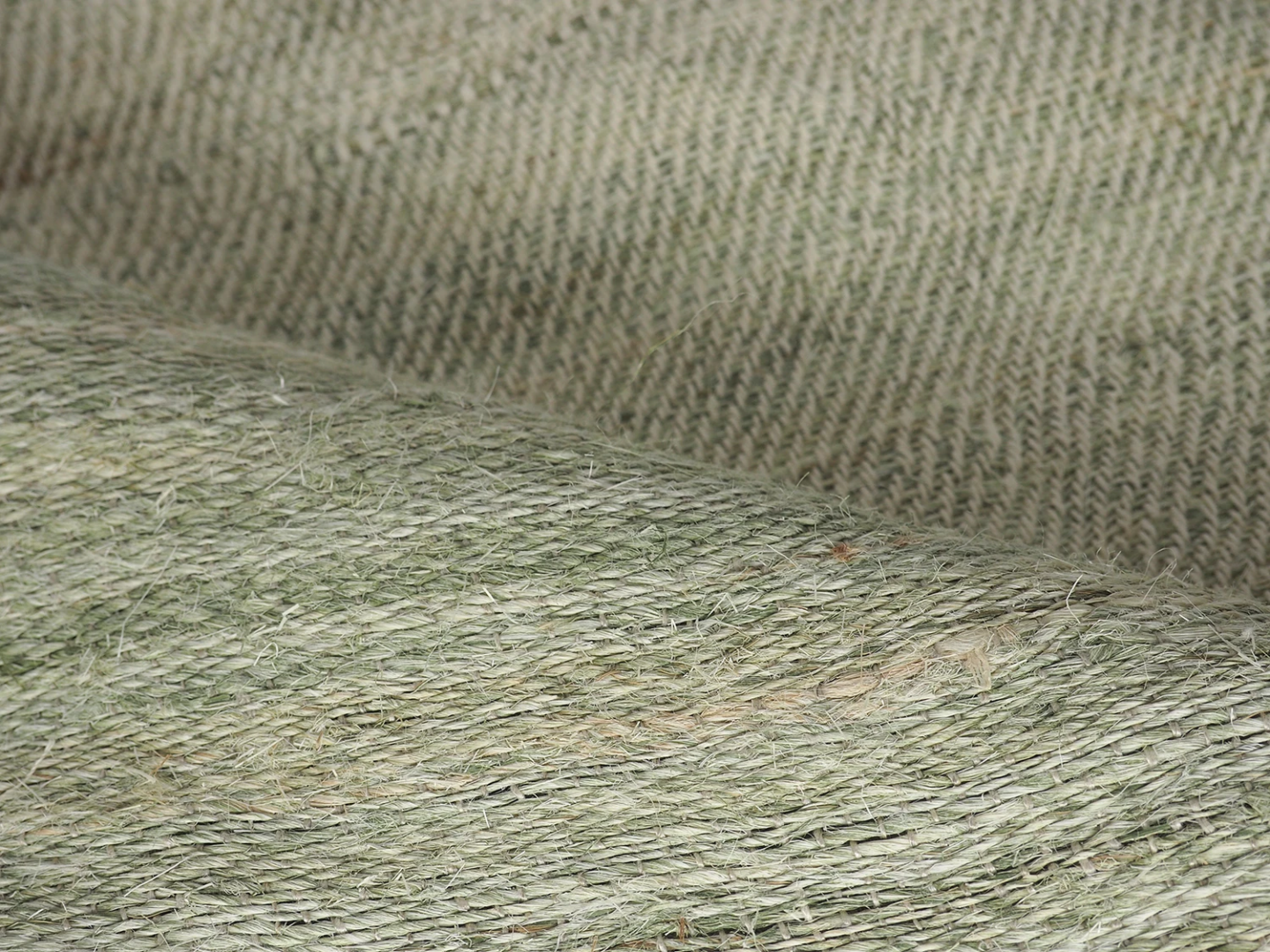
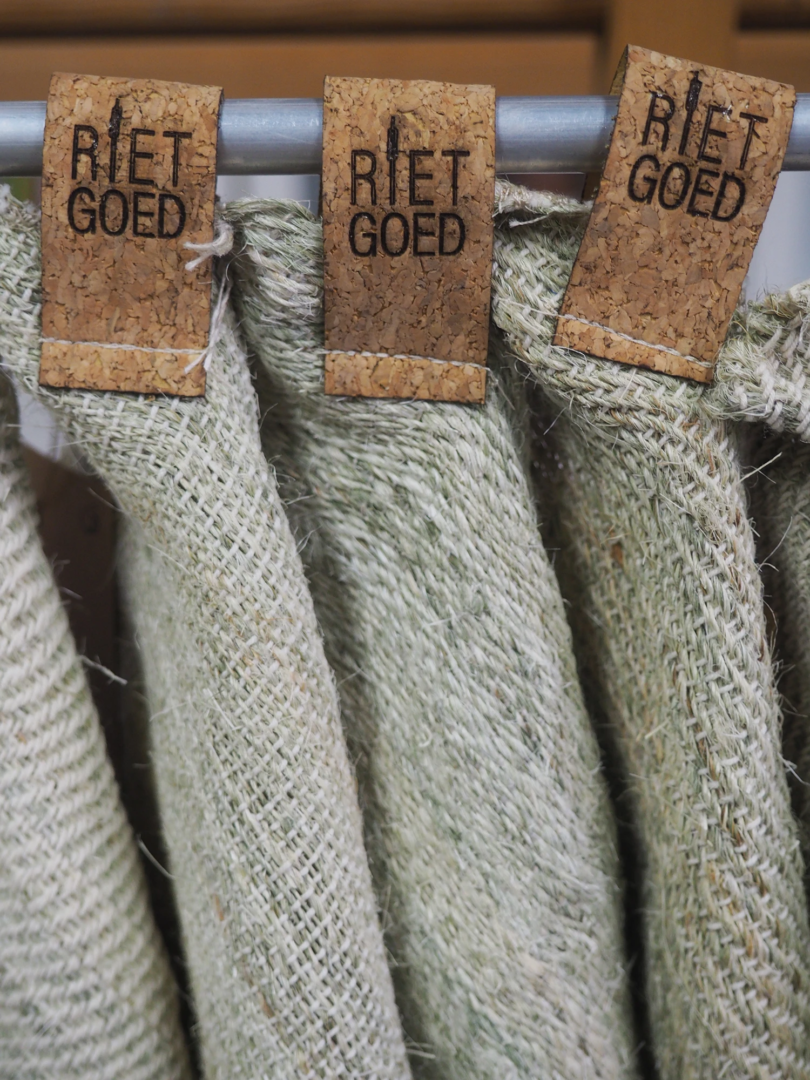
Observation as a farming skill: what cattail teaches us about regenerative agriculture
Weather plays a big role. “In the first year, I could harvest until November. In the second, the crop was ruined by September. In the third year, everything was going well, until heavy rain and wind destroyed the harvest. I don’t even blame myself: the timeframe for harvesting was too short. I’ve learned to adapt. My plants, which used to grow to just one meter, have now reached 2.5 meters tall.”
“Observing is a skill you learn from working the land,” Veentjer says. “Most farmers know their crops so well they don’t even think about it. They just look at their land and instinctively know what to do. That’s not yet the case with this plant – especially in the context of making textiles. It’s still new territory. There’s a lot to figure out as we go.”
Cattail as a stubborn but promising plant for sustainable textiles and agriculture
Veentjer calls cattail a stubborn plant. “You have to keep geese from eating the young shoots. The roots spread anywhere there’s soil or moisture – even where you don’t want them. It also reproduces through pollen, producing large, dusty plumes with around 40 million seeds each. Then again, there’s always something. No crop is as predictable as its synthetic counterpart.”
To turn cattail into textiles, many unknowns remain, like the best harvest time for high-quality fiber. Veentjer’s current fiber-extraction machine isn’t nearly enough to scale up. “Four weeks of full-time processing gave me 1.5 kilos – that’s nothing.”
Spinning mills also need to be on board. Could it be spun in the same facilities that process hemp or flax? “They definitely won’t say yes unless you show up with at least a hundred kilos of freshly harvested cattail.”
From cattail to future biomaterials: unlocking the hidden potential of wetlands
It surprises Veentjer that only now we’re beginning to (re)explore fibers from wetlands as a climate solution and as part of fashion’s return to natural materials. She aims to build a functioning supply chain within the next five years, after which she hopes to explore other underused or undiscovered plants. “They say that for every biomaterial we know, there are 100,000 we don’t. If it works with cattail, who knows what else might be hiding in the wetlands.”


